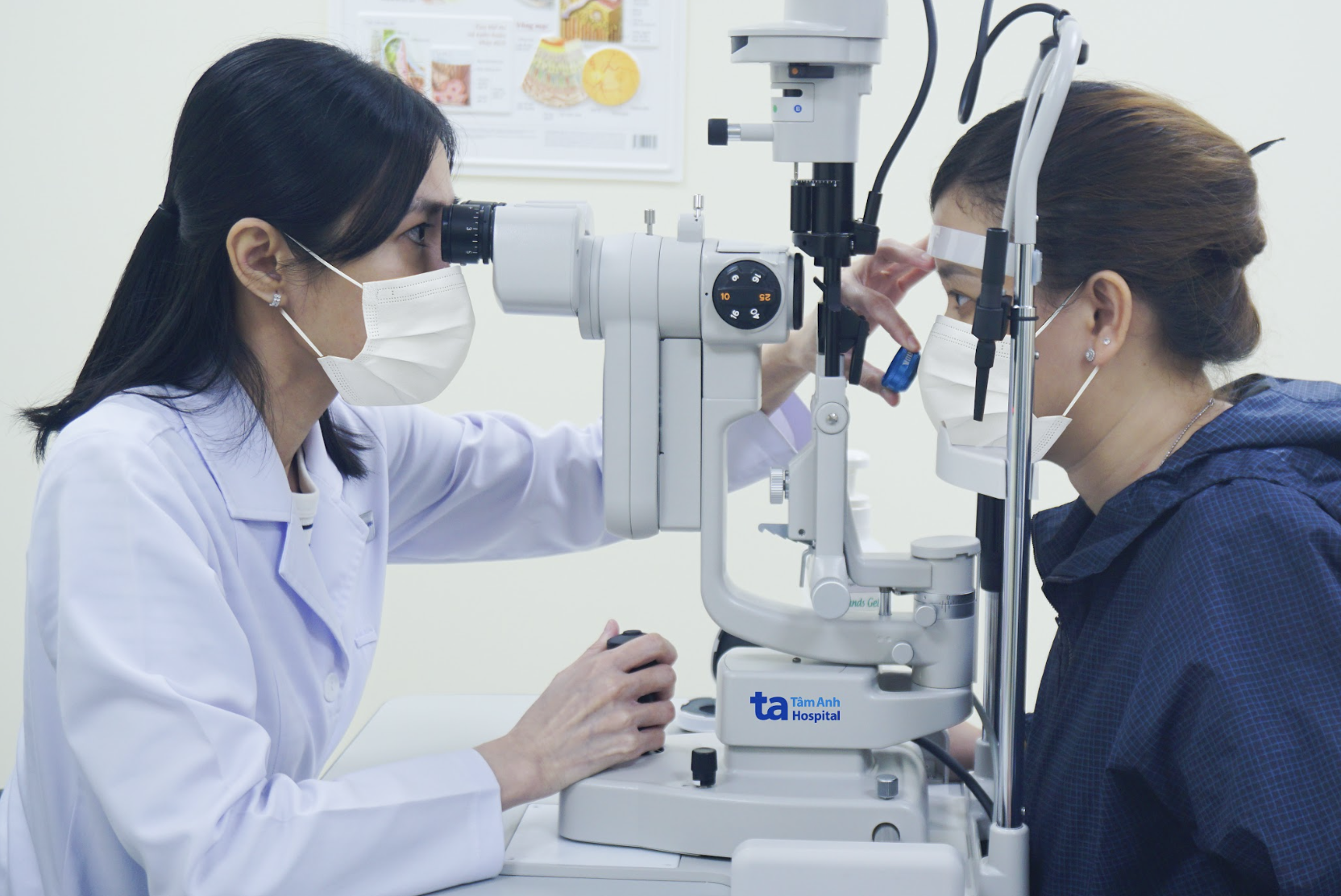Doctor Tang Ngoc Anh, deputy head of the Ophthalmology Department at the High-Tech Eye Center, Tam Anh General Hospital in Ho Chi Minh City, explained that Lan Anh's eyes had physiological large optic disc cupping, a variation in the optic nerve's shape. This condition, which doesn't affect eye function, allows for corrective surgery if other factors are favorable.
Lan Anh underwent comprehensive testing, including assessments of her optic nerve structure and function, corneal curvature and thickness, the risk of vitreous degeneration, and eyeball length. All results were normal. Blood tests and a pre-anesthesia examination confirmed she was healthy enough for the procedure.
 |
Doctor Ngoc Anh examines Lan Anh's eyes. Photo: Tam Anh General Hospital |
Doctor Ngoc Anh examines Lan Anh's eyes. Photo: Tam Anh General Hospital
The surgery employed Femto Pro technology, a minimally invasive, advanced refractive procedure known for its quick recovery time. A femtosecond laser created a precise corneal flap in about 8 seconds, minimizing pain and tissue disruption. Then, the Mel 90 excimer laser system reshaped the underlying corneal tissue, correcting Lan Anh's vision based on her specific refractive error measurements.
The corneal flap was repositioned and adhered naturally without stitches, minimizing the risk of complications. Two days post-surgery, Lan Anh's vision reached 20/20.
 |
Lan Anh before (left) and after (right) the surgery. Photo: Tam Anh General Hospital |
Lan Anh before (left) and after (right) the surgery. Photo: Tam Anh General Hospital
Doctor Ngoc Anh advised that after corrective eye surgery, patients should avoid rubbing their eyes, wear sunglasses outdoors, and limit swimming and eye makeup for the first two weeks. Regular follow-up appointments and adequate rest are essential for complete recovery and stable vision within the first 3-6 months.
Duc Tri
| Readers can submit questions about eye diseases here for doctors to answer. |












